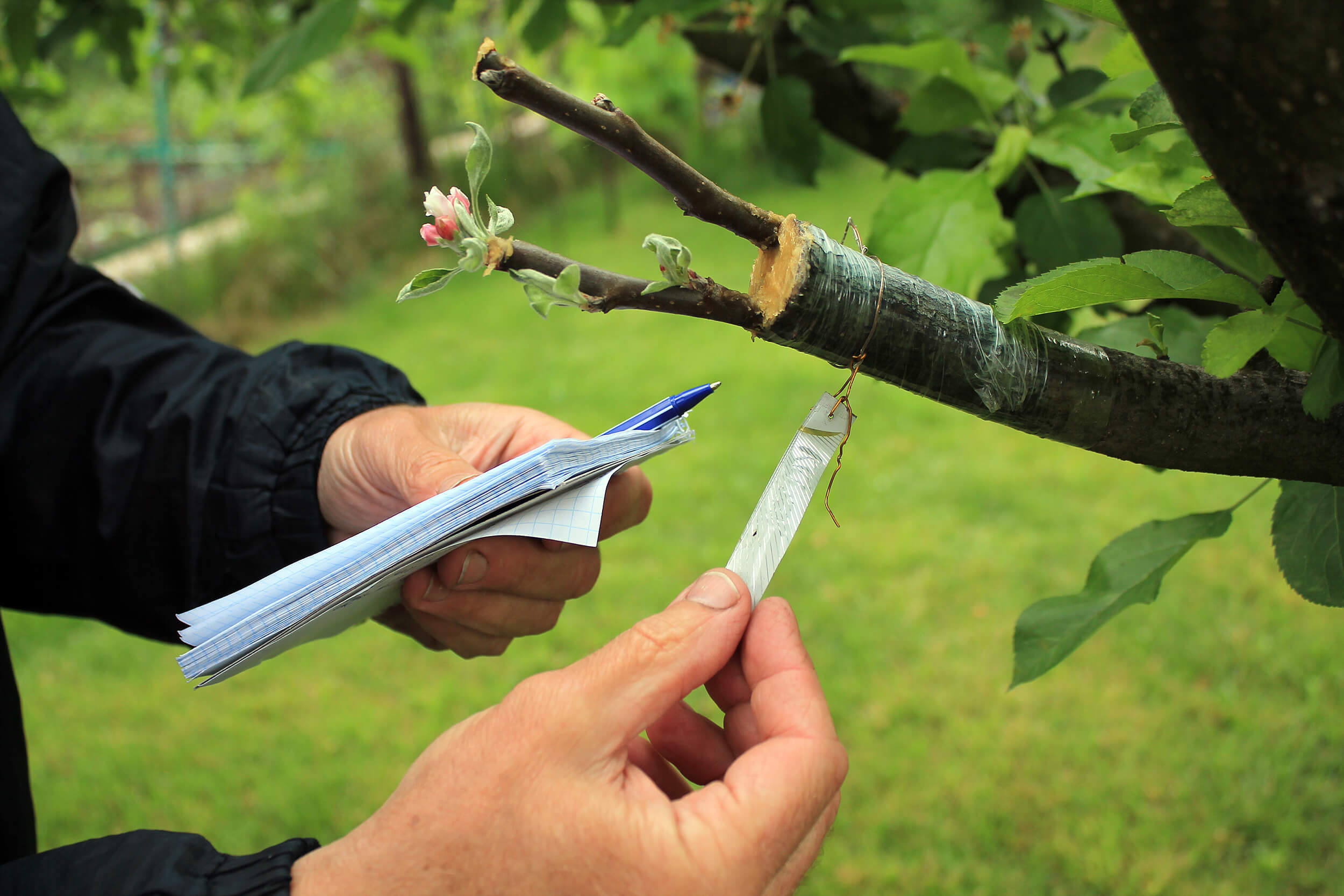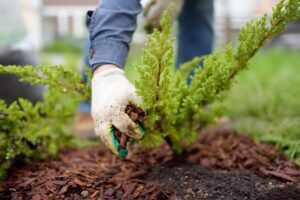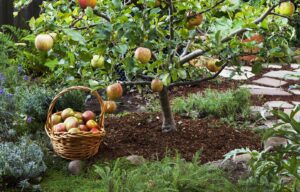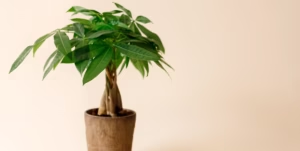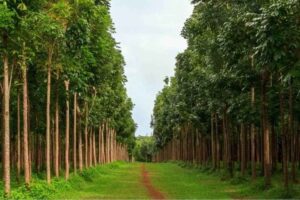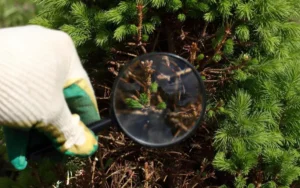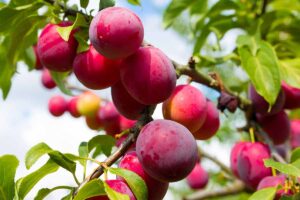5 Common Tree Diseases and Their Treatments
Trees are vital components of our environment, providing oxygen, shade, and aesthetic beauty. Unfortunately, they are also prone to various diseases that can compromise their health and even lead to death if not treated promptly. This article will explore five common tree diseases, how they damage trees, and how to treat and prevent these issues.
Common Tree Diseases Overview
| Disease Name | Caused By | Primary Symptoms | Affected Trees |
|---|---|---|---|
| Dutch Elm Disease | Fungi (Ophiostoma) | Wilting, yellowing leaves | Elm |
| Powdery Mildew | Fungi (Erysiphales) | White, powdery coating on leaves | Oak, Maple, Ash |
| Anthracnose | Fungi (Discula) | Leaf spots, wilting, defoliation | Sycamore, Oak, Maple |
| Cedar-Apple Rust | Fungi (Gymnosporangium) | Yellow-orange spots on leaves, galls on twigs | Apple, Cedar, Crabapple |
| Root Rot | Fungi (Phytophthora) | Root decay, wilting, poor growth | Various species, including oak, pine |
How Diseases Damage Trees
Tree diseases, primarily caused by fungi, bacteria, or viruses, attack different parts of the tree, including the leaves, bark, roots, and trunk. Some weaken the tree by blocking its ability to transport water and nutrients, while others attack foliage, reducing the tree’s capacity to photosynthesize.
- Dutch Elm Disease: This fungal disease spreads through beetles and root grafts, clogging the tree’s vascular system. The tree can no longer transport water and nutrients, leading to wilting and death.
- Powdery Mildew: A common fungal infection, it coats leaves with a powdery white substance, preventing them from photosynthesizing. Although rarely fatal, it weakens trees and reduces their aesthetic value.
- Anthracnose: This disease primarily targets leaves and causes blotches, curling, and premature defoliation. Severe cases weaken the tree, making it susceptible to other diseases and environmental stress.
- Cedar-Apple Rust: This fungal disease affects both cedars and apples, causing yellow-orange spots on leaves and galls on twigs. In severe cases, it can reduce fruit production and weaken trees.
- Root Rot: A particularly damaging disease caused by water mold fungi, root rot attacks the tree’s root system, leading to wilting, poor growth, and often tree death. It typically thrives in poorly drained soils.
Identification and Diagnosis of Tree Diseases
Identifying tree diseases early is crucial for effective treatment. Here are some steps and methods for diagnosing common tree diseases:
- Visual Inspection: Regularly inspect your trees for abnormalities like discolored leaves, unusual spots, bark splitting, or galls. Each disease has distinctive symptoms.
- Tree Health Monitoring: Monitor tree growth and health. If a tree is wilting, stunted, or dropping leaves prematurely, it could indicate disease.
- Collect Samples: If you suspect a fungal or bacterial infection, collect samples of the affected leaves, bark, or branches. These can be taken to local extension offices or laboratories for diagnosis.
- Soil and Moisture Checks: Certain diseases, like root rot, thrive in specific soil conditions. Testing the soil for pH and moisture levels can help determine if your tree is at risk for diseases like root rot.
- Professional Help: If you are unable to identify the disease, consult with a certified arborist who can provide a proper diagnosis and recommend treatment.
Treatments for Tree Diseases
Treating tree diseases involves a combination of preventive care, chemical treatments, and cultural practices to improve tree health. Below are some common treatments for each disease:
| Disease Name | Treatment Methods | Medicines/Insecticides |
|---|---|---|
| Dutch Elm Disease | Pruning infected branches, fungicides | Propiconazole |
| Powdery Mildew | Improve air circulation, fungicides | Sulfur, Potassium bicarbonate |
| Anthracnose | Remove infected leaves, fungicides | Chlorothalonil, Mancozeb |
| Cedar-Apple Rust | Remove galls, fungicides | Myclobutanil, Mancozeb |
| Root Rot | Improve drainage, fungicides | Fosetyl-Al, Metalaxyl |
Step-by-Step Guide for Treating Tree Diseases
Step 1: Identification
- Inspect the tree for common signs of disease, such as leaf discoloration, galls, bark splitting, or root damage.
- Use visual aids or consult a local expert to identify the specific disease affecting your tree.
Step 2: Isolate the Tree
- If possible, isolate the diseased tree to prevent the spread of the infection to other trees in the vicinity.
Step 3: Prune and Remove Infected Areas
- Remove and dispose of infected branches, leaves, and twigs. Ensure tools are sterilized to prevent spreading the disease.
Step 4: Apply Fungicide or Treatment
- Apply fungicides as recommended. Use systemic fungicides for internal diseases like Dutch Elm Disease, and topical fungicides for external infections such as Powdery Mildew.
Step 5: Improve Tree Care
- Keep trees healthy with proper watering, mulching, and fertilization. Healthier trees are more resilient to diseases.
Step 6: Prevent Future Infection
- Regularly inspect trees for signs of disease, prune trees to improve air circulation, and treat wounds promptly to prevent infections.
Medicines for Common Tree Diseases
- Dutch Elm Disease: Propiconazole is the most commonly used fungicide for Dutch Elm Disease. It can be injected into the tree to stop the spread of the fungus.
- Powdery Mildew: Sulfur-based fungicides or Potassium bicarbonate are effective treatments. They should be applied early when the first signs of infection are visible.
- Anthracnose: Fungicides like Chlorothalonil and Mancozeb are effective for controlling Anthracnose. Spray the tree during the early stages of leaf development.
- Cedar-Apple Rust: Myclobutanil or Mancozeb fungicides should be applied to both cedar and apple trees to prevent and control the disease.
- Root Rot: Fosetyl-Al and Metalaxyl are systemic fungicides that can help control Phytophthora root rot by drenching the soil around the tree’s roots.
10 FAQs about Tree Diseases
- What are the most common tree diseases?
Common tree diseases include Dutch Elm Disease, Powdery Mildew, Anthracnose, Cedar-Apple Rust, and Root Rot. These diseases, caused by fungi, bacteria, or viruses, can severely weaken or kill trees if not treated properly. - How can I identify tree diseases?
Look for symptoms such as discolored leaves, wilting, bark splitting, and root decay. Use online resources or consult an arborist for an accurate diagnosis based on the specific symptoms. - Can tree diseases be cured?
Some tree diseases can be cured if detected early, while others can only be managed to prevent further spread. Regular treatment and pruning are critical in preventing the progression of diseases. - What causes Dutch Elm Disease?
Dutch Elm Disease is caused by a fungus spread by elm bark beetles. The fungus clogs the tree’s vascular system, leading to wilting and eventual death if untreated. - What are the signs of Powdery Mildew?
Powdery Mildew appears as a white, powdery substance on the leaves and stems of trees. It affects the tree’s ability to photosynthesize, weakening its overall health but rarely causing death. - How can I prevent Anthracnose?
Prune trees to improve air circulation, remove infected leaves, and apply fungicides in the early stages of leaf development to prevent the spread of Anthracnose. - What is Cedar-Apple Rust?
Cedar-Apple Rust is a fungal disease that alternates between cedar and apple trees. It causes yellow-orange spots on leaves and galls on twigs, which can weaken the tree and reduce fruit production. - How does Root Rot affect trees?
Root Rot occurs in waterlogged soils where fungi attack and decay the roots. This leads to wilting, poor growth, and in severe cases, tree death as the roots can no longer support the tree. - Can fungicides treat tree diseases?
Yes, fungicides are commonly used to treat fungal tree diseases. Systemic fungicides like Propiconazole for Dutch Elm Disease or topical sprays for Powdery Mildew can be highly effective when applied properly. - How can I keep my trees healthy to prevent diseases?
To keep trees healthy, provide adequate water, mulch, and fertilizer. Prune to improve air circulation, monitor for early signs of disease, and treat wounds promptly to prevent infections.
Here is a list of 25 top companies in the USA that specialize in tree disease identification and treatment:
| Company Name | City & State | Phone Number | Website URL |
|---|---|---|---|
| Davey Tree Expert Company | Kent, OH | (800) 445-8733 | davey.com |
| Bartlett Tree Experts | Stamford, CT | (877) 227-8538 | bartlett.com |
| SavATree | Bedford Hills, NY | (800) 341-8733 | savatree.com |
| The Care of Trees | Wheeling, IL | (847) 279-7900 | thecareoftrees.com |
| TruGreen | Memphis, TN | (844) 287-1637 | trugreen.com |
| Monster Tree Service | Fort Washington, PA | (888) 744-0155 | monstertreeservice.com |
| Almstead Tree & Shrub Care Co. | New Rochelle, NY | (914) 576-0193 | almstead.com |
| Wright Tree Service | West Des Moines, IA | (515) 987-1820 | wrighttree.com |
| Lewis Tree Service | West Henrietta, NY | (800) 333-9368 | lewistree.com |
| SavATree | Denver, CO | (303) 466-3175 | savatree.com |
| Schneider Tree Care | Taylors, SC | (864) 244-3088 | schneidertree.com |
| Heartwood Tree Service | Charlotte, NC | (704) 525-3066 | heartwoodtree.com |
| Giroud Tree and Lawn | Huntingdon Valley, PA | (215) 682-7704 | giroudtree.com |
| Hansen’s Tree Service | St. Louis, MO | (636) 379-1830 | hansentree.com |
| Arborwell Professional Tree Mgmt | Hayward, CA | (888) 969-8733 | arborwell.com |
| Integrity Tree Service | Phoenix, AZ | (602) 788-0005 | integritytree.com |
| Custom Tree Care, Inc. | Topeka, KS | (785) 478-9805 | customtreecare.com |
| Kinnucan Tree Experts & Landscape | Lake Bluff, IL | (847) 234-5327 | kinnucan.com |
| Chippers Tree Service | Dallas, TX | (972) 743-9959 | chipperstreeservice.com |
| Rainbow Treecare | Minnetonka, MN | (952) 922-3810 | rainbowtreecare.com |
| Bartlett Tree Experts | San Rafael, CA | (415) 456-5816 | bartlett.com |
| Arbor Master Tree Service | Virginia Beach, VA | (757) 463-6680 | arbormastertree.com |
| Tree Health Management | Danbury, CT | (203) 730-3639 | treehealthmgmt.com |
| Aspen Tree Service | Carbondale, CO | (970) 963-3070 | aspentree.com |
| The Davey Tree Surgery Company | Livermore, CA | (925) 443-8500 | davey.com |
These companies offer professional tree care services, including disease identification, treatment, and prevention.
